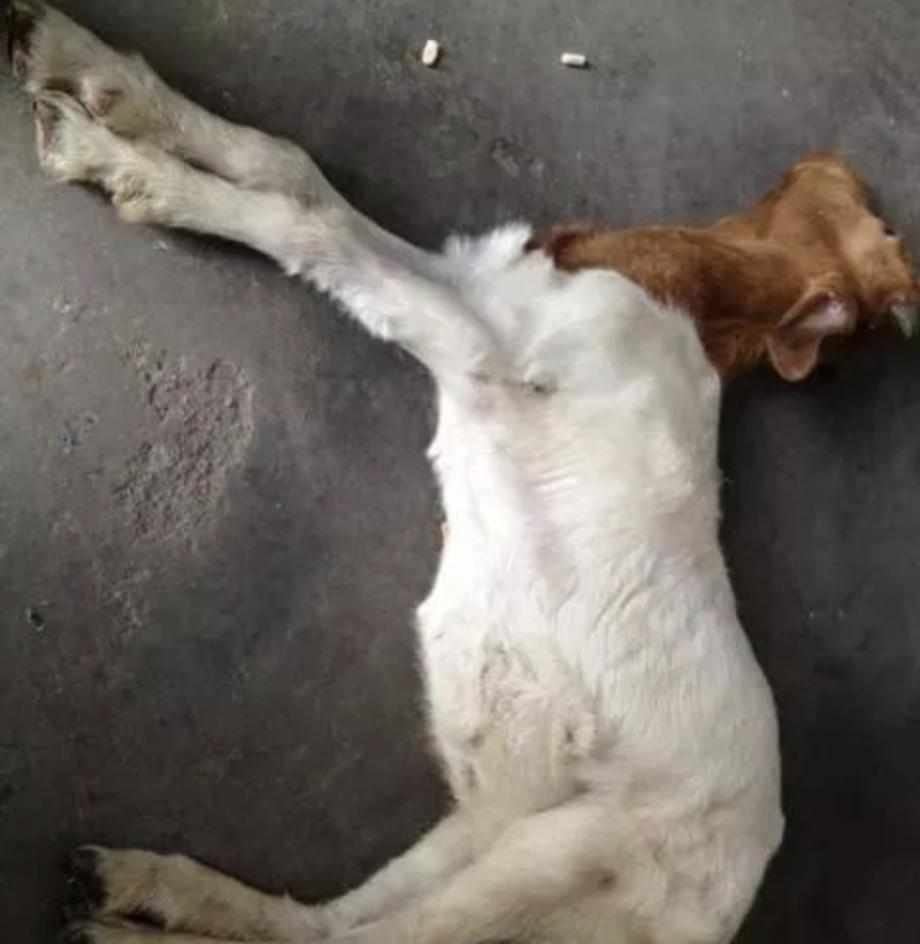
Newborn lamb "convulsions" is a nutritional metabolic disorder. Generally occurs in the annual lambing season, the first to 10 days old lambs can be diseased, especially the 3-day-old to 7-day-old lambs have the highest incidence, and lambs over 10 days old have sporadic diseases.
Cause of onset
1. Malnutrition: When the ewe is malnourished during pregnancy, vitamins, minerals and trace elements are lacking, which cannot meet the needs of fetal growth and development, resulting in congenital stunted growth of newborn lambs, after birth, the newborn lamb endocrine disorders, metabolic disorders and neurological "convulsions" symptoms.
2. Milk deficiency: ewes have little or no milk; ewes are not strong or suffer from mastitis; newborn lambs are too weak to suck on their own milk, resulting in inability to eat colostrum in time, will not be able to supply the newborn lambs with nutrients needed for growth and development, so that they will be sick.
3. Suffering from chronic diseases: If the pregnant ewe suffers from chronic anterior stomach disease for a long time, it affects the synthesis of vitamin B in the body, causing the ewe to lack vitamin B during pregnancy, which is also the main cause of the disease.
Clinical symptoms
Clinically, it is mainly characterized by neurological symptoms.
Newborn lambs suddenly fall ill, the head is thrown back at the time of the onset, the whole body spasms, teeth grinding, mouth foam, empty pharynx, teeth closed tightly closed, head shaking, blinking, body sitting backwards, ataxia, often falling to the ground convulsions, four hooves trampling, increased mouth temperature, dark red tongue, dendritic congestion of the conjunctiva, breathing, rapid heartbeat, symptoms last 3 to 5 minutes. After the symptoms of neuroexcitability, the sick lamb sweats all over the body, is tired and weak, is depressed, hangs his head and cannot afford to lie down, often lies in the dark, breathing and heartbeat slow down, and repeated attacks at intervals of ten minutes to half an hour or more.
In the later stage, due to the shortening of paroxysmal interval time and prolonged seizure time, it is finally due to endocrine disorders, extreme metabolic disorders in the body, excessive energy consumption, excessive swallowing of air, rapid expansion of the stomach and suffocation to death. The course of the disease is generally 1 to 3 days.
Treatment
1. Sedative and antispasmodic: In order to keep the lamb quiet, alleviate the metabolic disorders of the body and cerebral hypoxia, and inhibit the further development of the disease, sedatives should be used as soon as possible. Optionally, a diazepam injection can be used, and the dose of 1 to 7 mg per kilogram of body weight is calculated and injected intramuscularly. Chlorpromazine hydrochloride injection can also be used, and the dosage is calculated at a dose of 1 mg per kilogram of body weight, intramuscularly. It is also possible to use 5% shisopamine injection, the dosage is calculated at a dose of 0.5 to 1 mg per kilogram of body weight, intramuscular injection.
It can also be closed with 0.25% procaine 1 to 2 mL at the Lamb's Tianmen Cave (just behind the midpoint of the two-corner connection).
2. Supplement with B complex vitamins: inject 0.5 ml of B complex vitamins each time, and inject intramuscularly into sick sheep 2 times a day.
3. Supplemental calcium preparations: calcium fructoate injection, 1 to 2 ml each time, intramuscular injection; or Ginseng Mai injection, 1 to 2 ml each time, intramuscular injection. With 10% calcium gluconate injection, 10 to 15 ml each time, give the sick sheep intravenously, 2 times a day.
4. Chinese medicine formula: it is composed of 10 grams each of cicada coat, hook vine, gardenia, fried jujube kernel, Hangzhou white peony, Qingdai, parsnip, huanglian, mother of pearl, and licorice. Decoction can be taken once a day or every other day for 4 weeks. It has the effect of preventing the recurrence of convulsions.